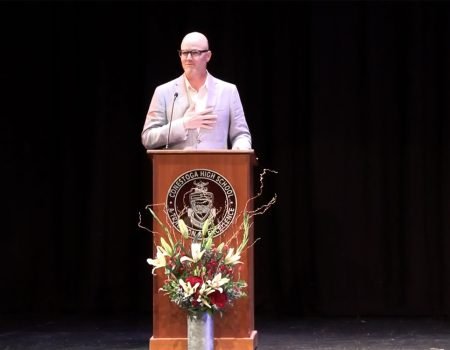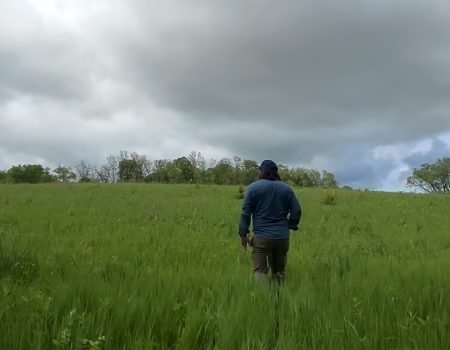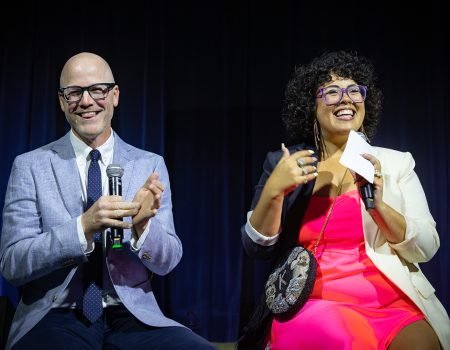Dubai: At Home At The End Of The World
Passport Control at Dubai International Airport seems a bit like the bridge of a Rebel Alliance starship; every stripe of the known universe is represented.
Despite our interminable wait after a day of protracted, ass-numbing air travel, I found myself thrilled — babbling, even — in my surroundings. Everything was hard lit, brushed steel, flat screened. The arrivals board flashed flights from Addis Abba, Amsterdam, Moscow, New Delhi, New York, Paris, Tehran and Tokyo. Bedouins, Congolese tribesmen and Iranian sheikhs queued tranquilly with Indians, South Africans and Australians.
Now, I live in New York. I see diversity every day. But this was special. This was different.
This was the power of the free trade zone.
Saturday morning, I shook off ill informed, xenophobic and paranoid mental pictures of Daniel Pearl, “The Kingdom,” and Gulf Wars Parts I & II, strapped on my Asics, and set out for a jog.
Al Sufouh Road is twelve lanes of well-manicured, sand-whipped, sun-stroked concrete connecting downtown Dubai to Jumeirah Beach and the Marina. At six o’clock on a weekend morning, it is choked with Nissan mini-vans four rows deep with workers.
See, if you’re into construction, Dubai’s your jam. Fifty percent of world’s cranes are in this city, one of seven principalities that together comprise The United Arab Emirates. They’re running 24/7, except Ramadan. And most of ’em are working for Sheikh Mohammad Bin Rashid Al Maktoum.
Even as recently as the 1950s, the northwestern coast of the Gulf of Oman was little more than a dusty collection of tribes under British rule. Prior to the discovery of oil, Dubai was a oasis of trade, pearl diving, hunting, and fishing.
The Seven Emirates came together as the UAE in December 2, 1971 when the UN mandated British withdrawal. As the beloved “Father of Dubai,” Sheikh Rashid bin Saeed Al Maktoum, saw his oil reserved dwindling, he turned to trade and tourism. Today, Dubia is booming like no other city on the planet.
There are some 4.5 million residents of the UAE. Over a quarter of the population lives in Dubai, 80% of whom are foreign nationals, all of whom are there for one of three reasons: money, money, money.
It’s a crazy place, like Vegas by the sea on massive doses of steroids.
It’s the kind of place where — apparently lacking sufficient waterfront property — they build their own islands and import their own dolphins. It’s the kind of place where rent is half of one’s salary, but a bottle of water is $.25, and a gallon of gas is less than a buck.
My jog from Le Meridian Mina Seyahi to the now-famous (thanks to massive marketing efforts and a sky-high tennis match on a helipad) Dubai icon, Burj Al Arab, is a study in excess and contrasts.
Hulking, slender, half-built skyscrapers — including the 180+ story Burj Dubai — punctuate the horizon. I pass Internet City, Media City, and Knowledge Village, all dead ringers for any given Southern California planned community (save for the Arabic).
Dubai College, there on the corner of Al Sufouh and Umm Suqeim Roads, features a well-detailed fleet of jet-black school busses parked amidst a lushly-landscaped campus of local high-grasses and imported flowers all irrigated (like the rest of the city) by an intricate series of drip-hoses just below the topsoil.
Al Sufouh is dotted with Shaikh’s palaces, each more grand, more imposing, and more gated than the next. It is lined by well-watered date palms and air-conditioned bus stops.
A thirty-foot billboard touts “The Most Exclusive Penthouses In The World.” A few miles later, another touts Hardees’ new mushroom burger. (Later, in Dubai International Airport, we spotted the McArabia: Hallel beef patty, lettuce, tomato and tzatziki on a pita — yum!)
Further north, Dubai Creek divides Bur Dubai from Dera Dubai. This working harbor is crowded with over 800 working dows — hand-built wooden trade ships that have sailed between Dubai, India, Iran, Iraq, East Africa since before Christ. Along the northern edge of the creek, water taxis ferry tourists and locals alike to the gold and spice souks as they have for over two thousand years.
Dubai is a monarchy. When Sheikh Mohammad Bin Rashid Al Maktoum eventually dies, his family will choose from one of his nineteen children from one of his two wives.
Which makes the whole experiment pretty interesting. In a way, the UAE is much like the United States circa Jamestown. Except no one’s flocking to this gold leaf gilded oasis to flee persecution or seek religious freedom. Global businesses — they’re all there, or on their way — are in Dubai because it’s the crossroads of the world. Europe, Africa, Russia, China, India are all within reach. Moreover, though, it won’t cost you anything. Until, perhaps, the monarchy changes its mind.
Still, Dubai is like an open socket. It’s a mad anthill, everyone scurrying about, toting something, building something. It’s bursting at the seems. It can’t wait for the future, and the future is now.
As the sun faded into the Arabian Sea, Karachi mopped up its blood, South Africa and England faced off in the Rugby World Cup, and Southern California slipped from a smoulder to a inferno, Abbi and I sat on the terrace of Le Meridian in a daze ticking off the remaining minutes of our honeymoon.
If this is how the world ends, I thought, at least we’re well tanned, well rested, and well loved.



